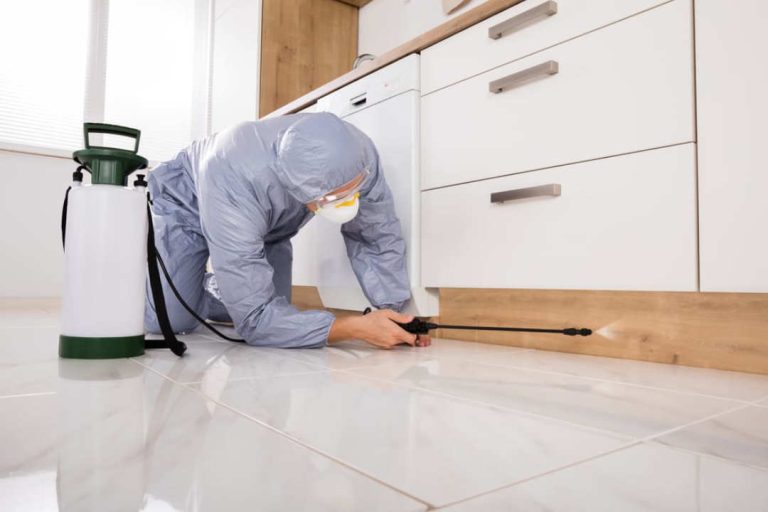Welcome to our comprehensive guide on how to clean kitchen cabinets before staining. If you’re considering giving your kitchen cabinets a fresh, new look by staining them, you’re in the right place. Staining cabinets can enhance the natural beauty of the wood, providing a rich and lasting finish. However, before you embark on this transformative journey, it’s crucial to start with a clean slate.
In this blog post, we’ll walk you through the step-by-step process of properly cleaning your kitchen cabinets, ensuring that you achieve the best results when it’s time to apply the stain. From removing grease and grime to preparing the surface for a flawless finish, we’ve got you covered. Let’s dive into the essential tips and tricks that will leave your kitchen cabinets primed and ready for a stunning stain makeover.
Materials Needed
Before you begin, gather the following materials:
- Mild dish soap
- Warm water
- Microfiber or soft cleaning cloths
- Grease-cutting cleaner
- Paintbrush or toothbrush
- Sandpaper (medium and fine grit)
- Tack cloth
- Wood filler (if needed)
- Screwdriver (for removing hardware)
Step-by-Step Guide to Removing Grease and Grime
Discover a hassle-free solution to banish grease and grime with our Step-by-Step Guide. Dive into a detailed process that ensures a sparkling clean environment. Begin by identifying trouble spots and selecting appropriate cleaning agents. Learn the art of pre-treatment to loosen stubborn residues, followed by strategic scrubbing techniques.
Step 1: Remove Hardware and Empty Cabinets
Start by removing all hardware from the cabinets, including handles, knobs, and hinges. This step will make the cleaning process more effective and allow you to reach all areas of the cabinet surface. Empty the cabinets of all contents to make the cleaning process more manageable.
Step 2: Dust and Debris Removal
Use a dry, soft cloth or a duster to remove any loose dust and debris from the cabinet surfaces. Pay attention to corners, edges, and intricate details where dust tends to accumulate.
Step 3: Grease-Cutting Cleaner
Mix a solution of warm water and a mild dish soap. Dip a soft cloth into the soapy water and wipe down the cabinet surfaces to remove grease and grime. For stubborn grease buildup, use a grease-cutting cleaner suitable for your cabinet’s material.
Step 4: Detailed Cleaning
For hard-to-reach areas and intricate details, use a paintbrush or an old toothbrush dipped in the soapy water solution. Scrub gently to ensure all surfaces are thoroughly cleaned. Pay special attention to areas near cooking appliances where grease tends to accumulate.
Step 5: Sanding
After the cabinets have dried completely, use medium-grit sandpaper to lightly sand the surfaces. Sanding helps remove any remaining grease, smooth out imperfections, and provide a better surface for the stain to adhere to. Follow up with fine-grit sandpaper to achieve a smooth finish.
Step 6: Wood Filler (If Needed)
Inspect the cabinets for any dents, scratches, or imperfections. If necessary, apply wood filler to these areas and sand them down once dry to create a seamless surface.
Step 7: Tack Cloth
Wipe down the cabinets with a tack cloth to remove any sanding dust. A tack cloth is sticky and effectively captures fine particles, ensuring a clean and smooth surface for staining.
Step 8: Final Inspection
Before applying the stain, inspect the cabinets for any remaining dirt, dust, or imperfections. Address any issues as needed to achieve the best results.
Frequently Ask Questions on How to Clean Kitchen Cabinets Before Staining
- Why is it essential to clean kitchen cabinets before staining?
- Cleaning is crucial to remove grease, dirt, and grime, ensuring a smooth and even stain application.
- What materials do I need to clean kitchen cabinets before staining?
- You’ll need mild dish soap, warm water, microfiber or soft cleaning cloths, a grease-cutting cleaner, a paintbrush or toothbrush, sandpaper (medium and fine grit), tack cloth, wood filler (if needed), and a screwdriver for hardware removal.
- How do I start the cleaning process?
- Begin by removing all hardware and emptying the cabinets to access all surfaces effectively.
- What’s the first step in the cleaning process?
- Start by using a dry cloth or duster to remove loose dust and debris from the cabinet surfaces.
- How do I tackle grease and grime on kitchen cabinets?
- Mix warm water with mild dish soap, use a soft cloth to wipe down surfaces, and for stubborn grease, employ a grease-cutting cleaner suitable for your cabinet material.
- Are there specific areas that require special attention during cleaning?
- Yes, intricate details and hard-to-reach areas may need a paintbrush or toothbrush dipped in the soapy water solution for a thorough cleaning.
- Why is sanding an important step in the process?
- Sanding helps remove remaining grease, smooth out imperfections, and provides a better surface for the stain to adhere to.
- When is wood filler necessary in the cleaning process?
- Apply wood filler to dents, scratches, or imperfections, and sand down once dry to create a seamless surface.
- What is a tack cloth, and why is it used in this process?
- A tack cloth is a sticky cloth that effectively captures fine particles, ensuring a clean and smooth surface for staining by removing any residual sanding dust.
Conclusion:
Cleaning your kitchen cabinets before staining is a crucial step in achieving a professional and long-lasting finish. By following these steps, you’ll ensure that your cabinets are free of grease, dirt, and imperfections, creating the perfect canvas for a beautiful stain. With a little effort and attention to detail, you’ll transform your kitchen into a space that exudes style and sophistication.
- How to Clean Kitchen Floor Grout Naturally: Easy DIY Methods - June 25, 2024
- How to Clean Thermoplastic Kitchen Cabinets Properly: Expert Tips - June 19, 2024
- How to Clean Mica Kitchen Cabinets: A Simple Guide - June 19, 2024





![What Is The Easiest Way To Clean A Kitchen Fast [Expert Guide]](https://cleaningcarekits.com/wp-content/uploads/2023/07/what-is-the-easiest-way-to-clean-a-kitchen-fast-768x512.jpg)
